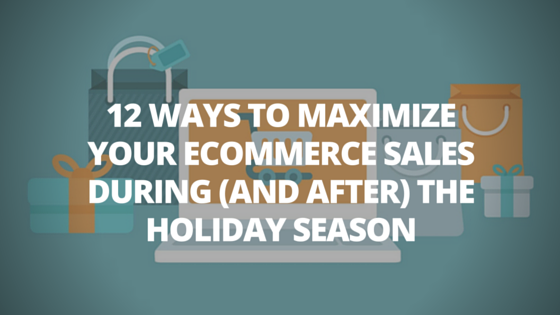
You’ve probably been on Amazon for years and never had a problem. But now, you’re running into scams left and right in the popular eCommerce space.
What do you do?
All it requires is your alertness, so, in this post, I will be discussing 10 of the worst Amazon scams to avoid and how to stay safe from them.
Worst Amazon Scams To Avoid
1. Refund Scam
Some of the most clever scams generally start by offering you a value you can hardly resist. This Amazon scam takes this route and it typically follows the following steps:
- Someone appearing to be a representative from Amazon suddenly calls you. The fake Amazon rep tells you that you were mistakenly overcharged in a previous purchase you made and the company is issuing you a refund. In some cases, the scam artist tells you in a ‘concerned’ tone that there was an error that led to your account getting wrongfully debited.
- That sounds like a message from a responsible company which you know Amazon is, so, the next natural question is “how do you get the refund?”
- Your attention having been secured, the scammer directs you to run commands that allow him/her remote desktop connection to your computer. As an Amazon ‘rep’, he supposedly needs that to be able to ‘assist’ you.
- Next, the pretender asks you to sign in to your Amazon account on your computer. Once you log in, he/she begins to manipulate your dashboard. That is possible with the remote access they already have to your device.
- The fraudster shows you a spoofed screen of your Amazon account dashboard showing that you are actually being owed a refund. Next, he asks you to log into your online bank account to make the refund possible. Through your hijacked dashboard, the scammer makes it look like the refund has been effected.
While all these are happening, you are giving away some of your most sensitive identity and banking data through the remote connection. Some of these scams would stop there at identity theft – which is already bad enough. But some others do even more.
In the other variant of this scam, the purveyor makes it appear like the refund was mistakenly done over say $2000 or more.
He/she, appearing to be alarmed by the error, tells you there is no dashboard function for you to repay the excess. He tells you he’s gotten into trouble with the company for the ‘error’ he’s responsible for. He’s the one to pay for it.
You begin to feel sorry for putting someone in trouble who’s here to help you get back your lost money. How can the error be reversed, you wonder.
Both of you seem to be embarrassed for a while. Then, the scammer begs that you send him a Visa gift card equivalent to the error margin to help him pay for it. He now holds your emotion; so you are likely to comply with the emotional request. This way, he has not only stolen your identity but also your money.
How do you stay safe from this Amazon scam?
- First, you need to be certain that no genuine Amazon rep will ever ask to have remote access to your device. That also means that they will never ask you to input stuff like ‘cmd’ or ‘ipconfig’. If Amazon ever overcharges you, they don’t need any remote access to your system to affect your refund.
- Again, don’t ever send a gift card to anyone who says he is an Amazon staff member. If any such error ever occurs (which is unlikely), Amazon must have an official procedure for correcting it.
A scam artist would prefer that you send a gift card to him than sending money to his bank. This is to evade being traceable. So, don’t let him have his way.
Also Read: Best VPNs For Amazon Firesticks
2. Order Confirmation Email Scam
This is another ploy that scammers may use to try and steal your identity. How does it go?
- You get an email complete with the Amazon logo. It bears the title “Order Confirmation’ or something similar. The content reveals that an expensive order (say for iPhone 12 Pro) has been placed from your Amazon account. The email also bears a delivery address you are not familiar with.
- Now, as usual, the order requires that you confirm it before it is shipped. Otherwise, you decline it.
- The email address would contain the word ‘amazon’ in some weird way (something like order-confirmation@amazonshop.club). But the last part of the email would normally be hidden based on how most email providers display emails. So, you may see only ‘order-confirmation@amazon-‘ while the rest is hidden. The scammers are aware of this. So, they exploit it.
To your unsuspecting eyes, that’s an official email from Amazon. So, your guard is let down.
The email would contain links to either confirm or decline the order. Alternatively, there would be a phone number for you to call in case you didn’t place the order.
If you click on the link to decline, you’ll be taken to an online form to fill out – supposedly for security reasons. By filling the form, you would have sent your data to some shady people.
Also, if you call the phone number placed on the email, the person at the other end gives you instructions to follow. It all boils down to supplying your sensitive data to the scam purveyors at the other end of the web.
Like the Amazon refund scam discussed earlier on, this one also thrives on exploiting your emotion but in a different way.
This is how: you are made to get alarmed, thinking that an unauthorized person is placing an order from your Amazon account. So, you would likely be obeying every instruction you are given without delay.
How do you stay safe from this scam?
- Click on the sender email address of every email that purports to come from Amazon. This way, the full length of the email address would be revealed. If it is not sent from any of Amazon’s official email address URLs, then, delete it immediately.
- Don’t click on any link on the email nor call the phone number on it – even to play along, because that would open you up to be targeted the more. Just ignore the email completely and delete it
Worth Reading: Hola VPN Review
3. Amazon Early Prime Day Deals Fraud
As you may know, every summer holiday, Amazon runs a special 2-day sales promotion known as ‘Prime Day’ sales. It is a time when Amazon customers usually hope to get some of the best deals of the year.
Normally, during the countdown to each year’s Prime Day sales, Amazon will send out deals by email for customers to take advantage of ahead of time. This is to reduce difficulties that may be associated with peak hours.
However, this beautiful practice is what scam artists have also begun to take undue advantage of. How?
- They would go as far as building websites that look every inch like the official Amazon website.
- Then, using spoofed email addresses, they would send out early but fake Prime Day deals.
- The emails they sent to you would contain links to the sales pages that apparently display the ‘hot’ deals. When you click through the links, the fake sales pages open, prompting you to enter your Amazon login information.
As you know, this is a trick used to collect your sensitive details for some vicious use. So, you don’t need to be told that you shouldn’t fall for it.
But, how would you avoid falling a victim to this scam and still be able to take advantage of genuine Prime Day deals?
- First, you are advised to never access prime day deals by clicking links on emails. Instead, you should be accessing the official Amazon website directly to take advantage of officially available deals.
- Don’t click on email links even if they come with the official Amazon URL because it could be a mere hyperlink designed to deceive you.
Check Out: Total VPN Review
4. Suspicious Charges Email/Robocall Amazon Scam
This scam is a lot similar to its ‘order confirmation’ counterpart. While the ‘order confirmation’ type would make you think that an unauthorized purchase has originated from your Amazon account, in this one, the scam artist actually tells you so:
- He/she sends you an email to tell you that an unauthorized purchase may have originated from your Amazon account.
- You are told to call a phone number in case you are not responsible for the purchase.
- Of course, you would call the number since you never initiated any purchase.
- You’d think that you are calling an official Amazon customer service. But no, you are calling identity thieves.
- Appearing to be helping to reverse the purchase and protect your account from further abuse, the thieves ask you for sensitive details. These may include details like your driver’s license, social security number, banking details, and more. Of course, you know what this means.
A variant of this scam is executed via robocalls or automated text messages prompting you to “press 1” and more.
How do you stay away from this scam?
- As in the case of an order confirmation Amazon scam, you are advised not to respond to any email that’s not from an official Amazon URL.
- You are also advised to never click on any link on such emails.
- Again, do not call any phone number on such an email.
- Indeed, do not obey any of the instructions of such an email or message (like asking you to install a ‘security’ app or other software or to press a button on your phone).
- If you click on a link on the email, it takes you to an Amazon look-alike website where you are made to give away your cherished data. So, if you are in doubt, prefer visiting the Amazon Website directly.
- Another tip for staying safe from this scam is to ALWAYS contact Amazon customer service from within your official Amazon account.
- Then, as an added layer of protection, a source advises preferring credit cards to debit cards while making purchases. That’s because a credit card transaction is far easier to reverse than a debit card one in case you end up falling into bad hands.
Explore: Avast VPN Review
5. Account Access Live Call Amazon Scam
This scam is presented so ingeniously that some of the wariest people may be falling for it. I guess it’s because this is one place the fraudsters make use of the data they steal via the items we’ve already discussed.
They use these stolen pieces of information to target the scam in such a way that you can hardly see through their pretenses.
I learned about this scam through the story of a Georgia woman who was a victim of it. According to her, she had always been extremely careful to not fall for fraud. Yet, she fell for this before she could realize her mistake. How come?
- She got a call from someone who said he was representing Amazon.
- The caller told her her purchase history for the last few months. This made her trust the caller undeservedly as a genuine Amazon rep.
- Then, the caller told her there might be some suspicious transactions going on in her Amazon account.
- He went on to ask her if she placed an order for a TV at the moment which she didn’t.
- Next, the caller asked her to give him brief access to her Amazon account to be able to assist in resolving the problem. She allowed him access without question based on trust. Then, she went ahead to check her bank account to see if any money was missing. That was when she realized her mistake.
- Before the woman could blink, a sum of $1,500 got transferred from her account.
How to avoid falling for this scam?
- Just know that no genuine Amazon rep would ask you for access to your account. Rather, if they can confirm a suspicious transaction related to your account, they can always reverse it from their backend especially if the transaction is yet to pull through.
- So, don’t give out your account access details to anyone even if they seem to know a lot about you. If you are in doubt, you can always contact Amazon customer service from your account dashboard.
Also Read: Data Security Becomes Imperative For Apps
6. Amazon Survey Scam
Amazon Inc. occasionally conducts customer surveys to help them in providing better services to their customers. Sometimes, the company offers gift card rewards to the customers who complete the surveys.
While I think this is a practice worth commending, I’d like to warn you that fraudsters have been known to take advantage of this as well.
How do they execute this scam?
- They simply connect to their target by email, phone calls, social media, or any other means.
- In each case, they present themselves as Amazon conducting one of their customer surveys.
- They offer you a gift card reward for completing the surveys. The aim is to use the opportunity to collect sensitive information from you.
- Since Amazon customer surveys are generally conducted through third-party sites, the survey scam artists don’t need to build sites that mimic the Amazon official website. But, they make their phishing sites look good enough to make you want to trust them as genuine.
How can you escape this type of scam?
- Amazon has informed the public that they would never ask for sensitive details like social security numbers and account information in any of their surveys. So, any online survey that claims to come from Amazon but is requesting such pieces of information should be suspect.
- Therefore, instead of complying with such surveys, you need to report it to Amazon by emailing stop-spoofing@amazon.com.
7. Phony Amazon Winning Raffle Award Text Message Scam
This Amazon scam typically proceeds as follows:
- The scam artists send you an SMS informing you that you have won a raffle draw for Amazon customers.
- To claim the award, they may require you to text ‘YES’ to a certain number or tap ‘ACCEPT’ on your screen. Or, they may ask you to click on a link.
- If you obey the promptings, you would be gradually led away into compromising the security of your device. For instance, tapping a button on the SMS might download spyware (such as a keystroke logger) to your device. With this, the criminals can track your activities to be able to target you more directly.
- Again, if you click a link on the text message, you might be led to a phishing website where your sensitive details are collected. Similar prospects may await you if you send a text message to a short code as required of you.
So, how can you stay safe from this type of scam? If you ever get such an SMS about a raffle draw win that you didn’t enter, contact Amazon customer service through your dashboard and share a screenshot of it with them.
If Amazon is running such a raffle program, they would tell you if the SMS you received is genuine.
8. Amazon Automation Scam
There is a range of services that have come to be identified as ‘Amazon automation’. Amazon automation programs generally involve someone building an Amazon store for someone else.
It is identified as ‘automation’ because the client just sits around without doing anything while money flows into his account from the Amazon store.
Most Amazon automation programs are patterned like dropshipping. So, the store builder gets a cut (say 30%) of the revenue earned from every sale while the store owner takes the rest. But there are other cases where someone would ask you to pay him a certain amount upfront to build an Amazon store for you.
While I have not been able to lay my hand on any concrete instance of fraud due to Amazon automation, there are indications that the latter kind (above) are being taken advantage of to swindle unsuspecting people:
- For instance, Redditors seem to be unanimous that a case of the second type reported on the platform should be taken with a pinch of salt.
- I happen to agree with those Redditors for a different reason than I saw any of them give. My reason? If someone claims to be able to build an Amazon store that earns 6 to 7 figures, then, the person should rather be content to earn recurrent commissions from it than opting for upfront payments.
- So, for me, a demand for upfront payment should be a red flag enough to avoid the service offer.
9. Amazon Account Info Update Scam
One of the most intriguing of these scams that I have found has to do with account info update. How does it proceed?
- Generally, the scam artists would send you an email explaining that your Amazon account has been put on hold due to some issues found with it.
- To release the account, you are required to click on an ‘update now’ button on the email to update your account info.
- The catch is for you to be led to a phishing website or to be tricked into downloading malware to your device.
- Well, that sounds familiar until you consider this case reported on the Amazon Seller Central platform in February 2020. That case bears some of the common red flags of Amazon scams such as excessive urgency, poor grammar, and an invitation to click on a button placed on the body of the email. No wonder all the members on board agreed that it’s a phishing email.
- Yet, the case is more complex than that. The reporter said that the email was sent from do-not.reply@amazon.com.
Could the scam artists have cloned an email with the official Amazon URL?
Well, even Amazon officially acknowledges that a fraudulent email could come with “forged email addresses to make it look like the email is from Amazon.com”.
Now, how can you avoid falling for a scam attempt requiring you to update your Amazon account urgently?
- As a rule, Amazon directs that you should never try to access your Amazon account by clicking on a button or a link placed in an email.
- You should rather form the habit of accessing your account via a web browser. I think this nails it no matter how the email address may have been forged.
10. Lost Package Scam
Of all the scams listed here, this is the one that may be specifically targeted at actual Amazon sellers. Since the breakout of the COVID-19 virus, there have been several complaints (such as this) of buyers claiming they couldn’t get some packages they ordered after they had been shipped.
There are indications that this may be connected to the social distancing rule that followed the pandemic outbreak:
- To avoid having physical contact with customers, some shipping companies were said to have instructed their agents to sign shippings on behalf of customers.
- While no one seems to be exactly sure about who is responsible for the missing items (whether the shipping companies, their agents, or the customers), the fact is that the packages could only have been lost to some real people somewhere. So, some scam is certainly involved.
- Then, as someone said, even if this turns out not to be an outright scam trend already, it provides a loophole for scams.
How to guard against this is to take advantage of Amazon’s Buy Shipping. This way you can be absolutely sure about where the package is. As a seller, if this happens to you and you cannot trace the package, coordinate with the customer to file an A-to-Z complaint with the Amazon Admin.
Conclusion
Although a lot has been said on this post, I can say that this sums it all up: You’ll be considerably safe on Amazon if you can just note that there are details Amazon will never ask you to supply to them across the web (such as credit card info, social security number, and passwords) and don’t access your Amazon account by clicking links/buttons in an email.















